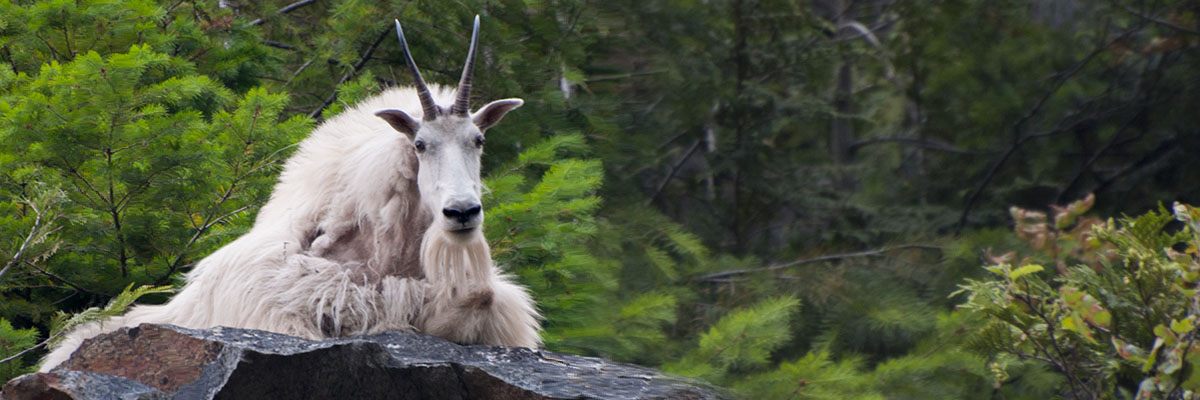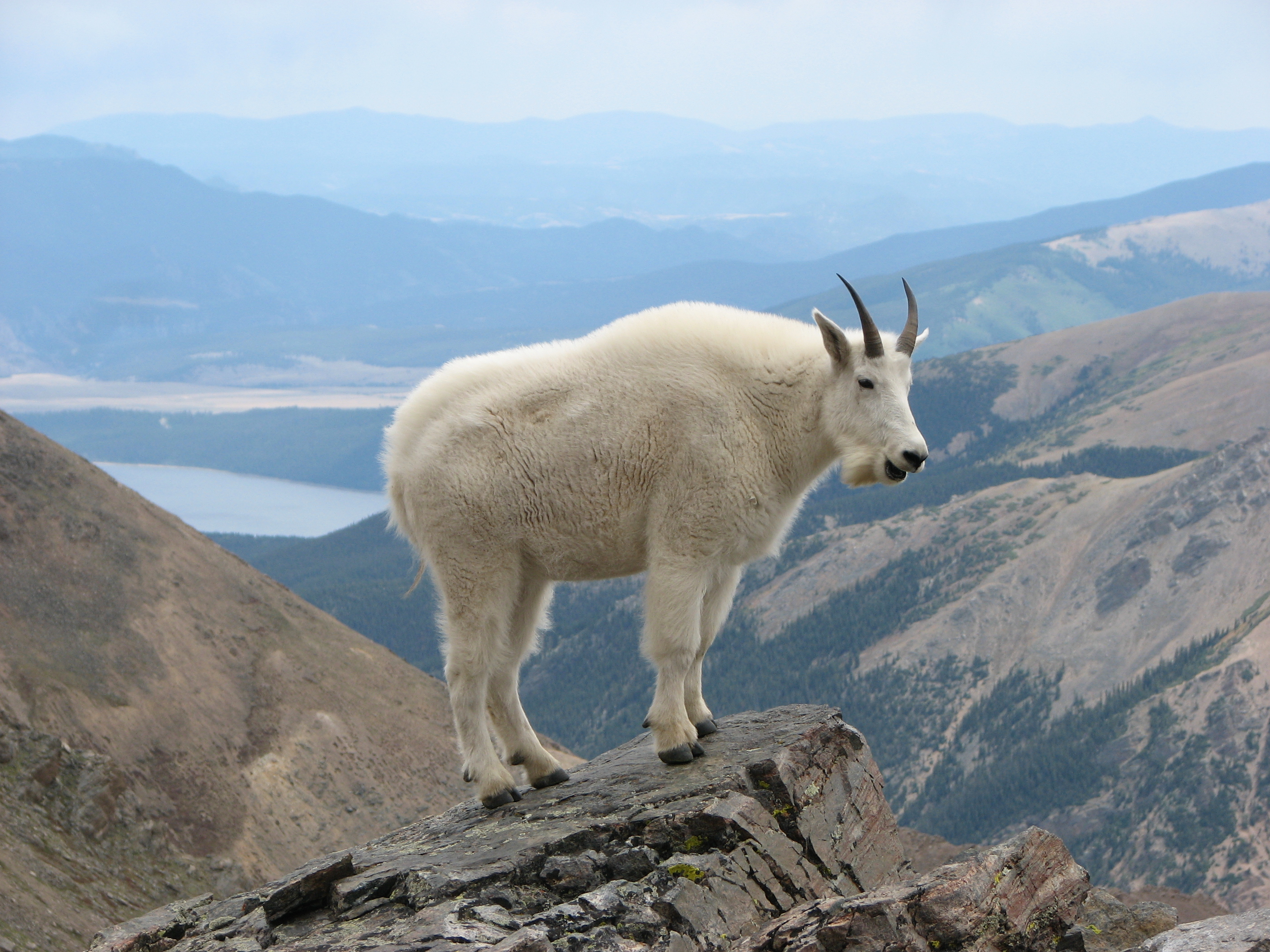Quick information
Feeds on grasses, lichens, mosses, sedges and flowering plants
Weight: Male 80 – 100 kg, Female 60 – 80 kg
Sounds include gasps and snorts, and high-pitched meows
The coat is made up of a thick undercoat and an outer layer of guard hair up to 20 cm (8″) long. Goats can withstand temperatures as low as -50°C!
Horns are made from keratin, similar to fingernails, and continue to grow throughout the animal’s life. Both males and females have horns.
Live 12 – 14 years
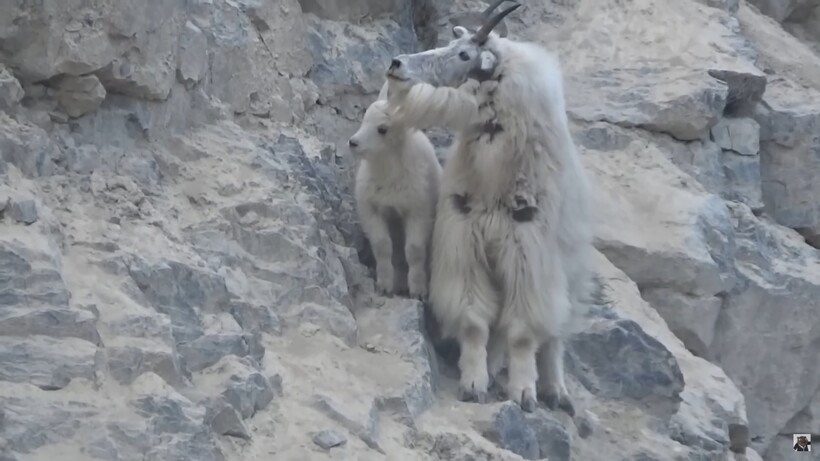
Able to scale seemingly steep cliffs and perform acrobatic maneuvers on narrow ledges, mountain goats are nature’s true climbers. The ability to live in steep mountainous terrain helps mountain goats avoid predators. While wolves, cougars and bears can still pose a threat to mountain goats, the terrain they inhabit is itself a threat, especially with rockfalls and avalanches.
Where they live
Mountain goats are found only in the mountain ranges of western Canada (Alberta and British Columbia) and the northwestern United States (Alaska, Washington, Montana, Idaho and Oregon). About 50% of them live in British Columbia, including in Mount Revelstoke and Glacier national parks.
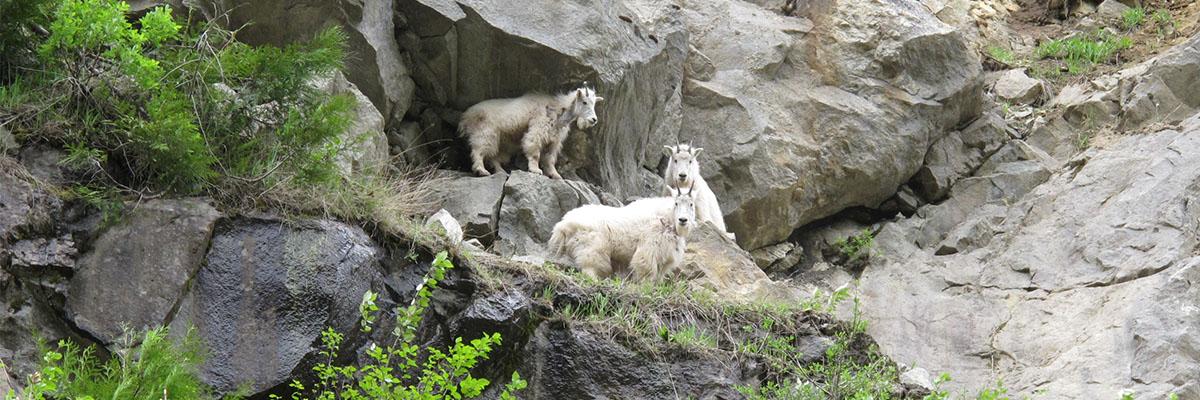
Why did the goat cross the road?
To get some salt to go with their spring greens! In the spring and summer, mountain goats in Mount Revelstoke and Glacier national parks sometimes descend on areas along the Trans-Canada Highway to eat fresh vegetation along the roadsides and lick salt off curbs and road surfaces. . Mountain goats are expert climbers. They can climb seemingly steep cliffs and perform acrobatics on narrow ledges. Unfortunately, these crazy skills don’t apply to safely crossing busy highways. Being on or near the road puts them at risk of being hit by vehicles.
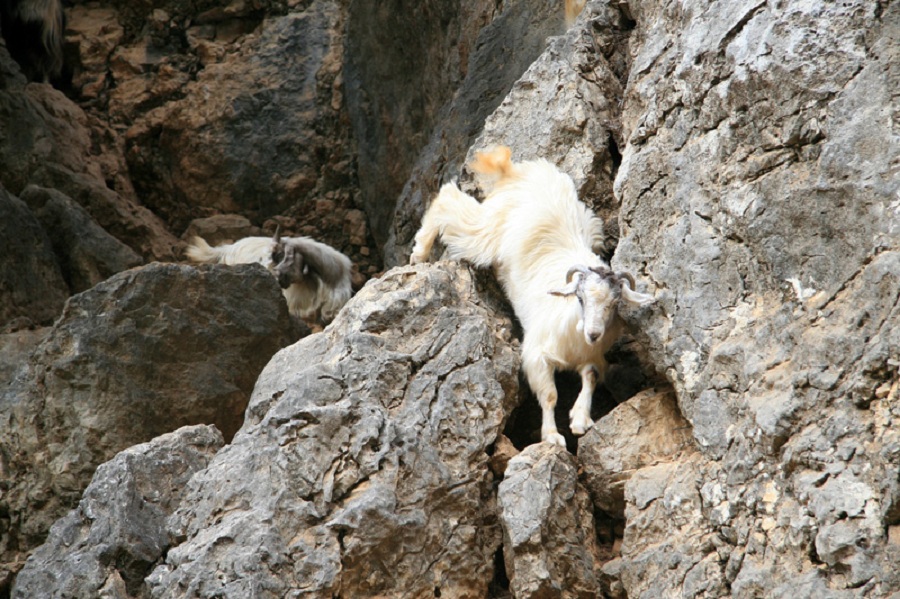
As traffic volumes continue to increase, it becomes increasingly difficult for species as diverse as mountain goats, caribou and bears to cross the highway. The ultimate goal of Mount Revelstoke and Glacier national parks is to reconnect landscapes that have been impacted by the highway. Many actions are being taken towards this goal, including several projects just for mountain goats.
What is Parks Canada doing?
Finding ways to connect landscapes so mountain goats can get what they need and where they want without crossing highways will support the survival of Revelstoke and Glacier Mountain populations. Reducing the risk of collisions is important to ensure the safety of goats and motorists on the Trans-Canada Highway.
Licking salt distracts
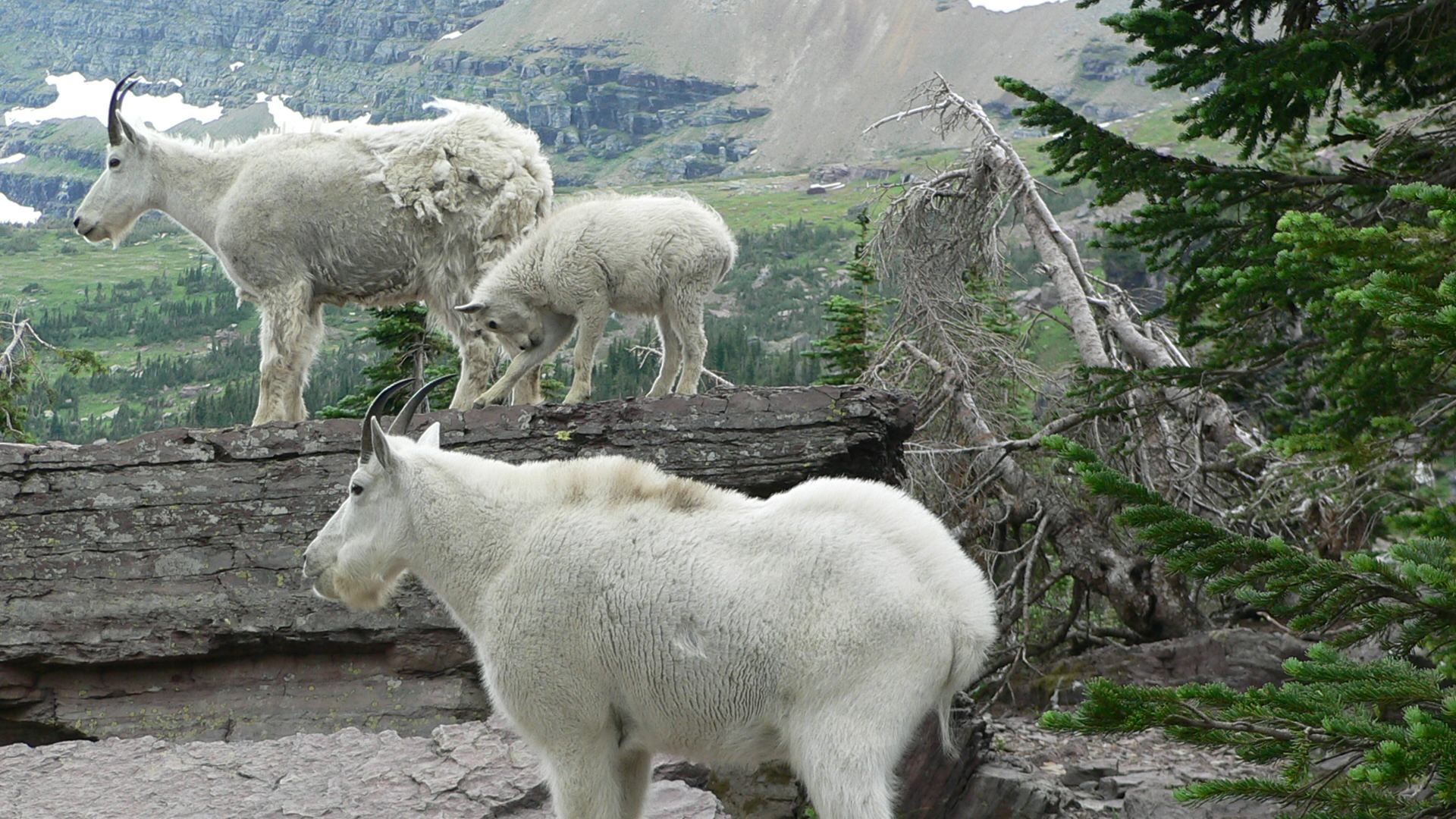
In Mount Revelstoke and Glacier national parks, there are several areas where goats often come down to the highway to get salt. As a short-term solution for those areas, artificial mineral deposits are being placed above the highway. Special salt for animal consumption is added to the soil in areas along goat trails to give them a chance to get to the salt before reaching the highway. As part of this project, natural mineral licks will be identified and their soils analyzed to help us provide mountain goats with the right mineral mix at the various licks. The only gourmet Columbia Mountain mineral blend for these kids!
Note: Do not feed goats or any other wild animals. This project is carried out under strict wildlife management procedures to ensure that goats do not consider humans as a food source and become habitual!
Mapping the habitat
To find a long-term solution, it’s important to learn where mountain goats like to go during different seasons in Revelstoke and Glacier Mountains national parks. Knowing where their critical habitat is can help identify where actions may need to be taken to ensure they have access to what they need in all seasons. This could include stopping them or helping them cross the Trans-Canada Highway. However, finding out where they go is not easy, unless you are a mountain goat. Parks Canada maintains a network of remote wildlife cameras throughout Mount Revelstoke and 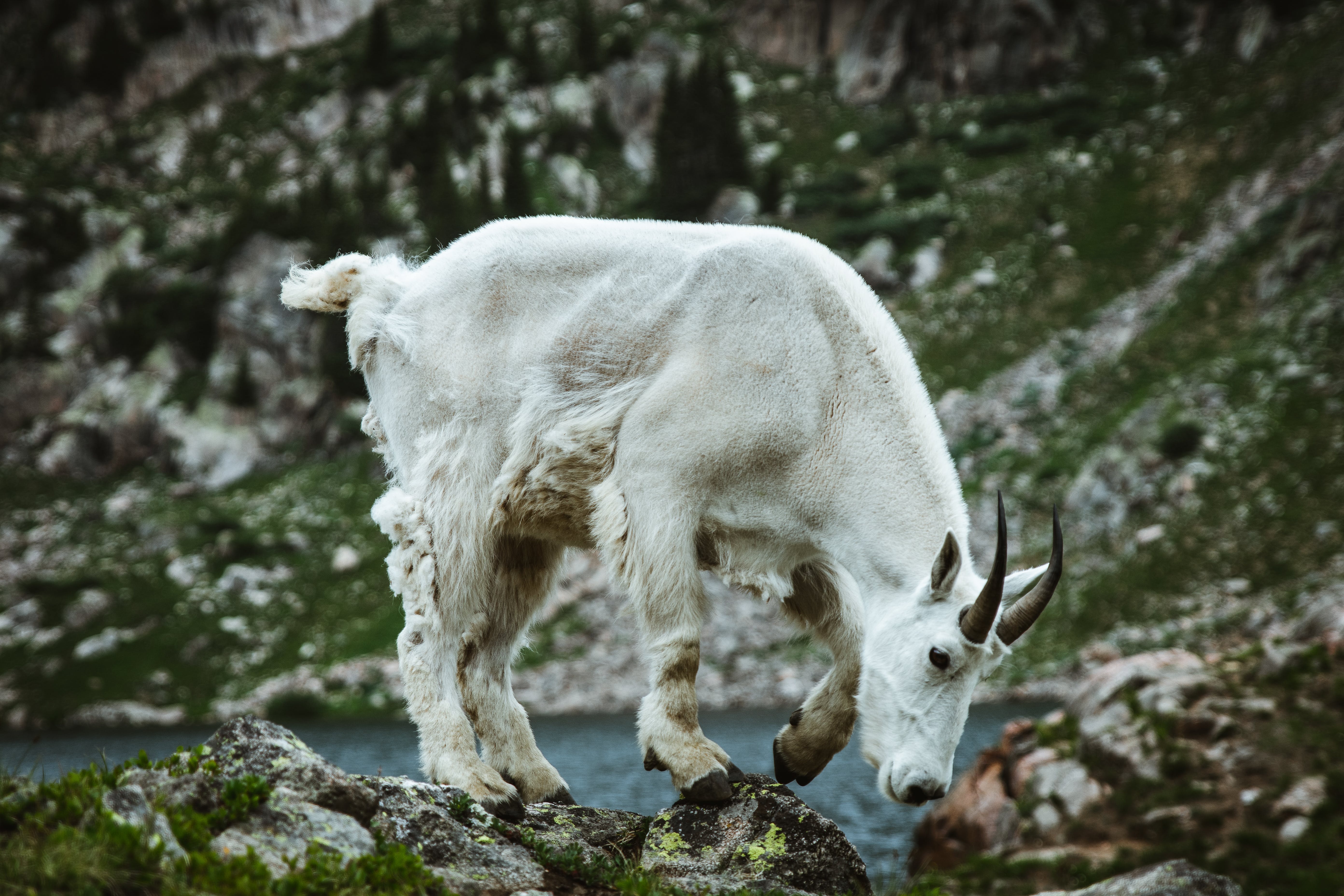
Glacier National Park. The cameras are part of a project to monitor wildlife distribution across the parks. While not specifically set up for mountain goats, goat photos taken on camera give you a glimpse into the times and places they traveled. There are also nine mountain goats in the park equipped with GPS collars. GPS collars provide location information for each goat every few hours. Important winter habitat for goats has been mapped through analysis of collar data. GPS collar data will also be used to map summer habitat, including important resources such as mineral deposits.
